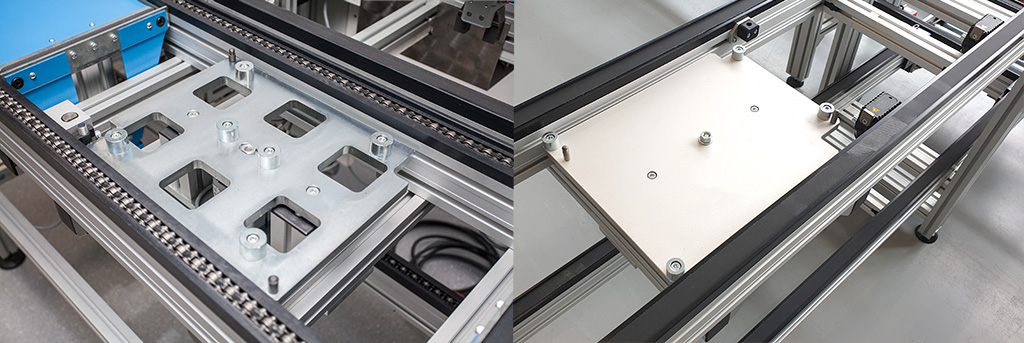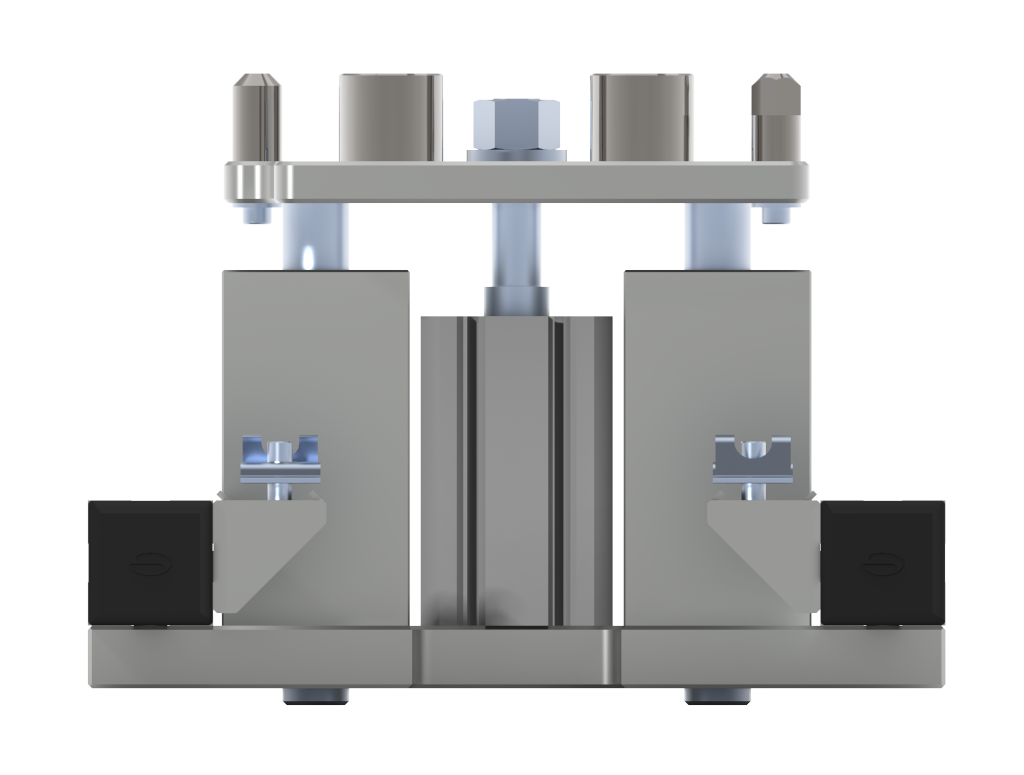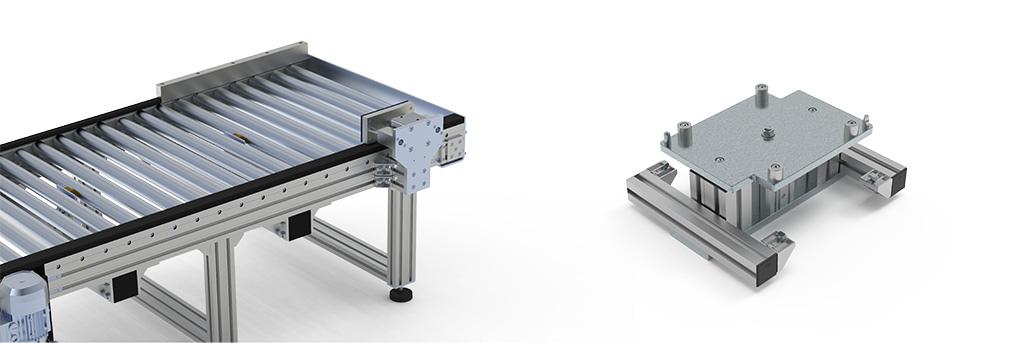In the world of material handling and automation, whether it’s in manufacturing, logistics, or various industrial applications, the ability to accurately position and move items or pallets is essential for optimizing processes and ensuring smooth operations. Positioning modules play a crucial role. In this article, we will explore the usability of positioning modules and highlight their differences, considering factors such as dimensions, cylinder types, strokes, and orientation.
Dimensions and cylinder types
One of the key aspects of positioning modules is their adaptability to different pallet sizes and weights. Manufacturers and industrial facilities often deal with a variety of pallets or material, each with unique specifications. To accommodate these varying needs, positioning modules are available in a range of dimensions and cylinder types.

- Dimensions: Positioning modules are tailored to position a wide range of pallet dimensions and weights. Whether your pallets are small and lightweight or large and heavy, we design positioning modules that suit the specific pallet size. These modules can be assembled in our transport system or conveyor system.
- Cylinder Types: Cylinder selection is another critical consideration. Depending on the weight of the pallet or the precision required, you can choose between pneumatic or electric cylinders. Pneumatic cylinders offer precise control in applications that require quick, repeated movements. Electric cylinders provide accurate positioning with minimal maintenance.
Stroke length and precision
The stroke length of a positioning module is an essential factor when choosing the right solution for your application. Longer strokes are necessary when you need to move pallet to higher hight, while shorter strokes may be suitable for tasks that require more precise positioning.
 Higer Strokes: Modules with higher strokes are versatile and can handle a wide range of tasks. They are ideal for tasks where items need to be lifted to higher heigth.
Higer Strokes: Modules with higher strokes are versatile and can handle a wide range of tasks. They are ideal for tasks where items need to be lifted to higher heigth.- Standard Strokes: Standard stroke modules are perfect for applications that demand precise positioning, such as assembly lines that require components to be placed with extreme accuracy. They are also suitable for tasks, where space is limited, and a shorter stroke is more practical.
Vertical and Horizontal Positioning
Positioning modules can be customized to operate in both vertical and horizontal orientations, making them incredibly versatile.

- Vertical Positioning: Vertical positioning modules are commonly used for tasks like lifting pallets to different heights and to position the pallet from the bottom.
- Horizontal Positioning: Horizontal positioning modules are used when items need to be positioned from the side y along an assembly line, conveyor, or other transport systems. They ensure that products are precisely positioned for further processing or packaging.
Conclusion
Positioning modules are indispensable tools for enhancing efficiency, precision, and adaptability in the industrial manufacturing. The usability of LIPRO positioning modules is diverse and highly flexible, as they are designed to meet customer needs. By carefully selecting the right positioning module for your specific application, you can improve your processes, reduce errors, and improve overall productivity in your industrial operations. Whether you are moving pallets, components, or products, positioning modules provide the flexibility and precision required for success.


